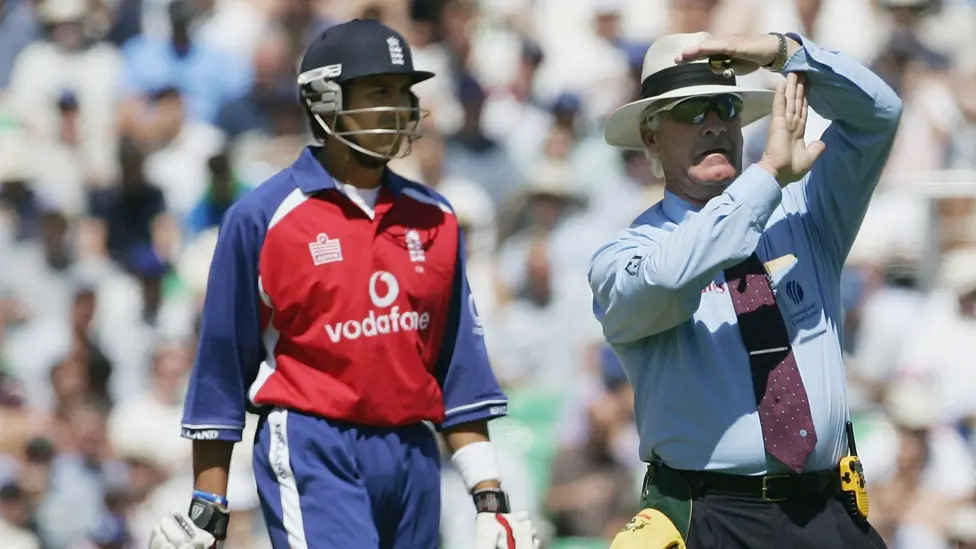
Post By : 2025-05-23"
Is it time for injury replacements in Test cricket?"
Is it time for cricket to make a change and allow teams to replace injured players?
Zimbabwe were already struggling on day one of the one-off Test against England at Trent Bridge when frontline bowler Richard Ngarava had to be helped from the field with a back injury.
That left the tourists potentially a bowler and batter short - effectively playing with 10 men because while an injured player can be replaced in the field, the replacement cannot bat or bowl.
Ngarava briefly returned to field later in the day but was unable to bowl because of how long he had spent off the field, and looked in discomfort before once again heading for the changing rooms.
BBC Sport looks at the current laws, when cricket has dabbled with substitutes in the past and asks the Test Match Special team whether it is time for subs to be brought in...
What are the rules?
The International Cricket Council (ICC) playing conditions for Tests do not allow full substitutes.
Teams are allowed to replace injured players in the field but the "substitute shall not bowl or act as captain but may act as wicket-keeper only with the consent of the umpires".
The exception comes if a player suffers a concussion.
Replacements for concussion have been allowed since 2019 - Australia's Marnus Labuschagne famously became the first concussion sub in Test cricket when replacing Steve Smith in the Ashes - and are able to bat and bowl.
Covid-19 replacements were brought in after the pandemic but have since been scrapped.
Cricket's laws are written by the Marylebone Cricket Club (MCC) and are usually mirrored by the playing conditions, but not always.
The MCC's Laws do allow for players to be replaced, at the discretion of the opposition captain.
In a statement to BBC Sport, the MCC said it "constantly monitors and reviews all Laws to make sure they remain fit for the modern game".
How often have injuries impacted matches?
There are numerous occasions when injuries have impacted matches.
England effectively played the entire first Test of the 2019 Ashes at Edgbaston with 10 players after James Anderson injured his calf four overs into day one.
In 2023, Australia spinner Nathan Lyon limped out of the second Test at Lord's on day two with a calf injury.
There have been famous examples of players battling on through injury which has added to the spectacle.
Colin Cowdrey batted with a broken arm in saving a Test for England against West Indies in 1963, while South Africa captain Graeme Smith bravely emerged with a broken hand in an attempt to save the Sydney Test against Australia in 2009.
What do the experts think?
Former England captain Michael Vaughan
Injury replacements should be permitted in Test cricket in the first innings of the game. There should be an independent doctor on site. If the doctor deems a player unable to carry on playing, you should be allowed a sub.
It should only be in the first innings. If you allow it to go into the second innings, there could be a little bit of skullduggery. If there's a genuine injury in the first innings, it affects the game and the entertainment, which fans pay money to watch. The first innings is a good cut-off to make it fair.
BBC chief cricket commentator and former England bowler Jonathan Agnew
I have seen a number of Tests ruined because a team is a player down. How do you prove it? It's another example of where there could be argument. It is something that is so difficult to prove.
Common sense says yes, of course, but you need a satisfactory way of showing beyond doubt that the player is genuinely injured. I think that would be open to all sorts of arguments.
Former England off-spinner Vic Marks
It's well worth considering. It would take a bit of administrating, just to make sure the injury is absolutely genuine. You wouldn't want to see anyone have the opportunity to fake injuries in order to change the nature of a team because of conditions or lack of form.
We had it in rugby where fake blood was spilt, so we want to avoid that. You need that proviso to make sure the system isn't abused, but it is something that should be examined.
Former Zimbabwe seamer Henry Olonga
I'm open to the idea of substitutes, perhaps with a limited number, but not necessarily like-for-like and not only restricted to injuries. If you want to grow the game globally, then make it more like other sports where subs are allowed.
Think of football, tactically if a game is going in a certain way, substitutes can be used to tweak the direction. If a fast bowler is going for a few runs, why not replace them with a spinner? I don't think it will be a popular opinion, but I am sticking to it.
TMS commentator Alison Mitchell
Yes, it should be looked into, but someone has to come up with a system where the system cannot be abused. We already have like-for-like substitutes if a player is concussed, so surely it should be brought in for other injuries.
Otherwise, you can end up with the situation like we may have with Zimbabwe in this Test. Then it just makes it a one-sided contest. If an injured player can't take any further part in a match, we have to find a way of keeping the contest going.
"
Premier League striker reportedly placed in an induced coma after ‘urgent’ surgery on serious abdominal injury
Nottingham Forest st

Sabalenka loses only one game in Paris opener
World number one Aryna Sabalenka droppe

Who will win the European Golden Shoe?
League titles have been won, relegation

Ronaldo 'could play' in Club World Cup - Infantino
Fifa president Gianni Infantino has cla

Yates up to second at Giro as crash affects GC battle
Asgreen held on for a remarkable breakaway win,

Champion cyclist sentenced over Olympian wife's car death
Former world champion cyclist Rohan Dennis has

Mass crash disrupts Giro stage six as Pedersen retains lead
Australian Kaden Groves of Alpecin-Deceuninck s



